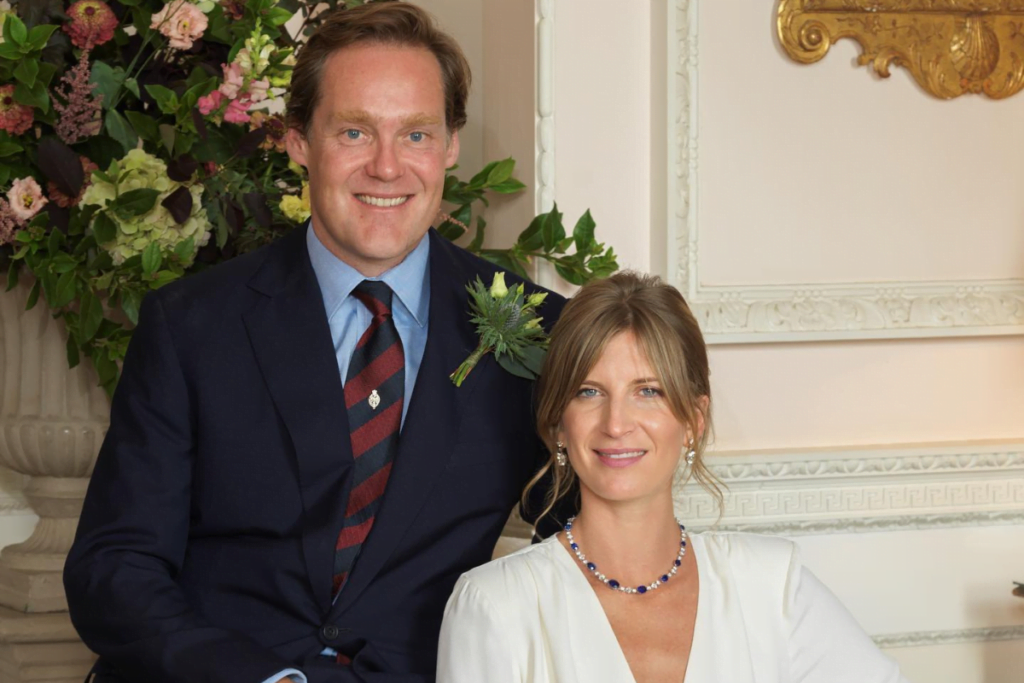A Ducal Wedding


In September, Charles, 11th Duke of Roxburghe married Miss Annie Green here at Floors Castle. Their marriage begins a new era for both Floors Castle and the Roxburghe family, and we are all delighted for the Duke and Duchess as they begin their lives together.
All the talk of weddings of late brings to mind another wedding of significance to Floors Castle and the Roxburghe family, that of Henry, the 8th Duke and the current Duke’s Great Grandfather, to his American bride, Mary Goelet in New York in the Autumn of 1903.
Mary was the daughter of American Real Estate magnate Ogden Goelet and Mary Wilson, the daughter of a prominent banker. Her mother had always had half an eye on Mary marrying into an aristocratic European family, and had ensured her position as a bridesmaid at the wedding of the Duke of Marlborough (himself Henry Roxburghe’s cousin) to American heiress Consuelo Vanderbilt in 1895.
American newspaper The Sun wrote of her in September 1903, not long before her wedding that, ‘May Goelet’s life has always been that of a twentieth century fairy princess who in her present incarnation is the daughter of the very rich American. She has all the pleasures that any princess of the bluest blood and the richest properties can enjoy, and she has also freedom which the other princesses may not have, however closely the lives of American girls may be modelled now after the titled women of Europe’.
Mary’s life was always going to be affected by the family from which she came, and the vast wealth that it entailed. Prior to marrying the Duke of Roxburghe, there had been a host of suitors vying for her hand. The list is long and distinguished, and also covered a broad social spectrum. Captain Oswald Ames of the 2nd Life Guards was a dashing cavalry officer, though socially unsuited to a match, though they were spotted together at social engagements. In 1902, Mary spent some time with Viscount Ingstre, the heir to the Earl of Shrewsbury, prompting the press to get excited about a possible match, though nothing transpired. She was also linked with the Duke of Manchester, Prince Francis of Teck, Count Boris, brother of the Tsar of Russia, and even the fifty year old widowed German Prince Hugo von Hohenlohe. All these suitors, as well as a raft of other eligible bachelors young and old, fell by the wayside. It must have all been something of a strain.
An indication of the circumstances in which the young heiress lived is perhaps given by the letter she received in 1901 form one Michael Myers of San Jose, Colorado. Myers introduces himself as a man who has some experience of the world, having travelled to Europe and successfully managed his businesses. He mentions that he will soon be inheriting fifteen million dollars, and writes to enquire if ‘Lady May’ would be interested in corresponding with him on the subject of matrimony. The letter appears to be unsolicited, though it is interesting that it can be found in a bundle of her letters in the family archive at Floors, showing that she valued it enough to keep it.


It seems that Roxburghe proposed during the Americas Cup of August 1903 and a date was set for New York in November of the same year. Mary’s mother set about organising the grand wedding she had always envisaged for her daughter. Roxburghe seems to have been genuinely appalled by the high profile nature of proceedings, as well as what he saw as intrusive behaviour on behalf of the American press, who were champing at the bit to get as much information on the duke and his family as possible.
Despite the best efforts of the New York constabulary, there was a raucous crowd assembled outside St Thomas’ church on the day of the wedding. A number of ladies had to be forcibly removed after sneaking in to the church, some were enterprising enough to attempt entry through manhole covers and coal chutes. When the bride finally arrived, she was delayed by the crowd outside, some even reaching in to her carriage in an attempt to feel the fabric of her wedding gown. When she managed to get inside the church, she found the cavernous interior had been made much more intimate by the addition of a huge amount of floral displays, and even the installation of some trees. The ceremony went without incident, and the wedding party fought through the crowds, many of whom subsequently gained entry to the church in an attempt to pillage the floral displays, before retiring to the Goelet mansion on 5th Avenue for the wedding breakfast.
After all was said and done, Mary Goelet had married the European aristocrat that her mother had set her sights on so many years before. This was not a mere match of title and fortune, such as the ultimately unhappy union of the Duke of Marlborough and Consuelo Vanderbilt however, but one built on mutual admiration, trust and love. An heiress had stolen the heart of a duke, and the influence of Floors Castle’s American duchess can still be seen in the castle interiors to this day.

